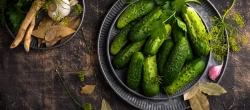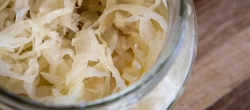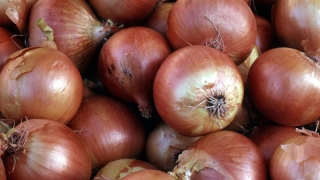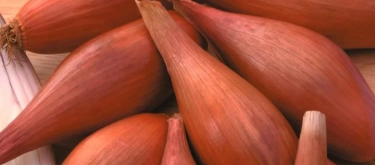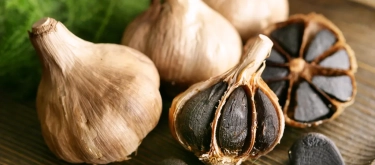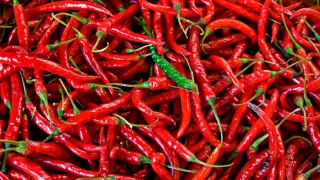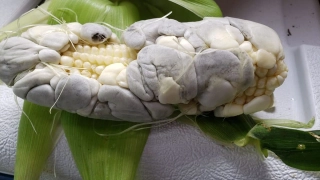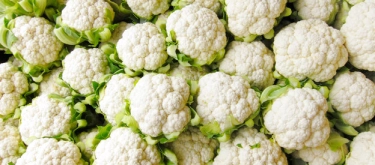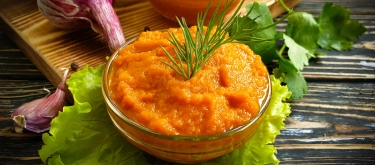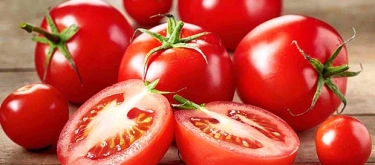Pickled Cucumber: Taste Profile, Aroma, Benefits and Health Risks
Pickled cucumber, commonly called a pickle, is a cucumber preserved in brine, vinegar, or other curing solutions. It is one of the world’s most popular preserved vegetables, eaten as a snack, side dish, or condiment. With origins tracing back thousands of years, pickling cucumbers ensured year-round access to vegetables and remains integral in cuisines worldwide.
Pickled cucumbers contain high sodium due to brining. People with hypertension or kidney disease should limit intake. Vinegar-pickled types may aggravate acid reflux. Rarely, individuals sensitive to cucurbitaceae (cucumber family) may react. Pregnant women can eat pickles in moderation but should avoid excess salt and vinegar.
What does Pickled Cucumber taste like?
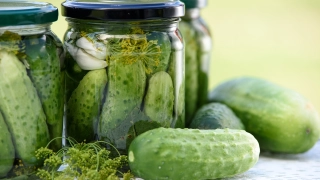
Complete Sensory Description
-
Taste: The first bite delivers sharp acidity and saltiness that immediately hits the tongue. As the chew develops, a refreshing cucumber base emerges, layered with tangy vinegar or lactic sourness. The finish lingers with briny salinity and faint sweetness.
-
Aroma: Retronasal aroma shows vinegar sharpness, dill-herbal freshness, and slight garlic or spice notes depending on seasoning.
-
Texture: Crunchy snap on biting, followed by firm, juicy flesh. Properly pickled cucumbers retain crispness, while overprocessed ones soften.
-
Appearance: Typically vibrant green, ranging from pale to dark shades, sometimes with dill or spices visible in the brine.
In-depth Flavor Analysis
Flavor depends on pickling method:
-
Fermented (lactic acid): Sourness from lactic acid, complexity from fermentation compounds (diacetyl → buttery notes; acetic acid bacteria → tang).
-
Vinegar-pickled: Dominated by acetic acid sharpness, stable flavor with less microbial complexity.
-
Key compounds:
-
Acetic acid (vinegar sharpness)
-
Lactic acid (fermentation sourness)
-
Salt ions (enhanced savoriness)
-
Dill essential oils (anethofuran, carvone → fresh herbal aroma)
-
Garlic sulfur compounds (allyl sulfides → pungency)
-
-
Flavor levers: Longer fermentation increases sourness and umami depth; shorter pickling retains cucumber freshness.
Varieties and Culinary Applications
-
Varieties:
-
Applications: Served as snacks, added to burgers, hot dogs, sandwiches, potato salads, or eaten with cured meats. Widely used to balance fatty or rich foods with acidity.
Selection and Storage
-
Selection: Crisp texture, bright green color, and intact skins indicate freshness. Avoid limp or yellowish pickles.
-
Storage: Unopened jars last months at room temperature. Once opened, store refrigerated in brine. Fermented pickles should remain submerged in liquid to prevent spoilage.
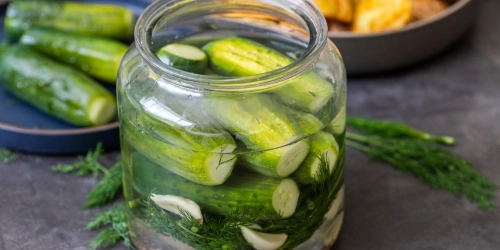
Nutritional Insights
Pickled cucumbers are low in calories but high in sodium. They provide small amounts of vitamin K, antioxidants from cucumbers, and beneficial probiotics in fermented varieties. They aid digestion and appetite stimulation but should be consumed in moderation due to salt and acidity.
Expert Insights & Culinary Tips
Chefs use pickles to cut through fatty meats and fried foods. Fermented pickles bring complexity to charcuterie boards. For milder flavor, soak pickles briefly in water to reduce salt before serving.
Interesting and Curious Facts
Pickling is one of the oldest preservation methods, with cucumber pickles mentioned in ancient Mesopotamia. Cleopatra reportedly credited pickles for part of her beauty regimen. In the US, dill pickles are a traditional accompaniment to deli sandwiches, while in Eastern Europe, fermented cucumbers are a winter staple.
Harm and Dietary Considerations
-
Excess sodium may contribute to hypertension.
-
Vinegar pickles can worsen acid reflux.
-
Overconsumption may cause bloating or stomach discomfort.
-
Pregnant women should avoid overindulgence due to sodium and acidity.
Religious Dietary Considerations
Pickled cucumbers are acceptable across religions:
-
Islam: Halal.
-
Judaism: Kosher dill pickles are a Jewish-American staple.
-
Christianity: No restrictions.
-
Hinduism & Buddhism: Acceptable, commonly eaten in India and Asia.
Final Thoughts & Sensory Journey
Pickled cucumbers combine crisp texture with refreshing sourness and briny depth. They balance heaviness in meals, awaken the palate, and connect modern cuisine to centuries of food preservation tradition.
Resources
-
Breidt F, Caldwell JM. Fermented Vegetables. In: Holzapfel WH (ed.), Advances in Fermented Foods and Beverages. Woodhead, 2016. ISBN: 9780081004369
-
Hutkins RW. Microbiology and Technology of Fermented Foods. Wiley-Blackwell, 2018. ISBN: 9781119027440
-
Fleming HP, McFeeters RF. “Fermentation of cucumbers brined with reduced salt concentrations.” Journal of Food Science, 1981. DOI: 10.1111/j.1365-2621.1981.tb15393.x
